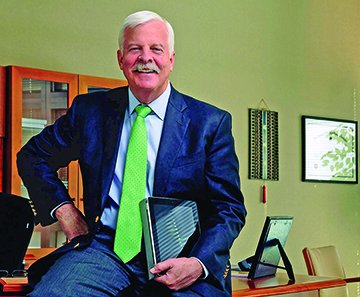New Audit Reveals 22% Of City’s Aging, Oversize, Underused Fleet Is Driven Less Than 100 Miles A Month
by Glen Richardson
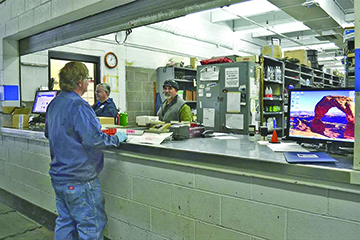
Key Party: Facilities Management stockrooms — a division of General Services — has an unknown number of keys in circulation, meaning parts can be accessed by unauthorized parties.
Riddled with oversized, underused, and aging vehicles, Denver’s Fleet Management Department is wasting limited resources, according to a new audit from City Auditor Timothy M. O’Brien, CPA. As a result, the city is increasingly at risk for fuel and parts theft.
“Too many older vehicles sitting idle costs taxpayers’ money,” O’Brien says. Moreover, he follows up, “Underused vehicles still require regular maintenance and storage.”
“But Fleet Management doesn’t have the authority to right-size the fleet because the vehicles are owned by other agencies,” Auditor O’Brien explains. “These issues stem from the way Fleet Management is funded, but it doesn’t help that the areas they do control are not being adequately safeguarded.”
Fueling Flaws
Transportation & Infrastructure’s Fleet Management Division maintains and provides fuel for over 2,500 vehicles and pieces of equipment belonging to 43 city agencies — not including Denver Police, Fire, and Denver International Airport.
More: It operates six fueling stations across the city and processes about 7,000 fuel transactions a month. For 2022 and 2023, that totaled about 169,000 fuel transactions worth $9 million.
The fueling stations allow authorized employees to refuel city-owned vehicles, but audit found significant flaws in how the division tracks fuel usage. Issues include abnormal transactions, access to former employees, code sharing, access to override codes, and the same person adding and authorizing fuel users.
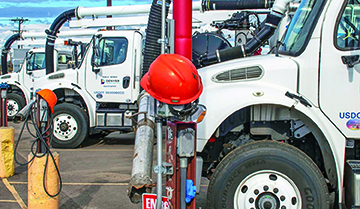
Fleet Of Hitches: Fleet Management maintains-fuels vehicles and equipment belonging to 43 city agencies it doesn’t control, creating risk of fuel and parts theft, new city audit reveals.
Ex-Staff Tank Up
These inconsistencies could be leaving the city at risk for fuel theft, O’Brien warns. When auditors compared the city’s list of 7,180 authorized drivers with city employees, they found 1,782 — 25% of them — no longer worked for the city.
When looking closer, they found 104 fuel transactions worth about $3,500 linked to nine drivers who were former city employees. The division’s current processes may fail to detect ongoing suspicious activity, the auditors suggest.
Fleet Management does not track override transactions and does not have official procedures to identify, resolve, and document all fuel transactions. Consequently, the audit could not identify the volume, associated costs, and reasons for the city’s override transactions.
Key Keepers?
When the audit looked at how parts are managed, they found Transportation & Infrastructure faces several obstacles.
First, the unstaffed stockrooms belong to Facilities Management — a division of General Services. There are an unknown number of stockroom keys in circulation. This means parts storage could be accessed by unauthorized parties.
Second, parts are supposed to be allocated to work orders for tracking purposes, but auditors found 979 parts that were not, totaling $21,292.
Oldy-Moldy Fleet
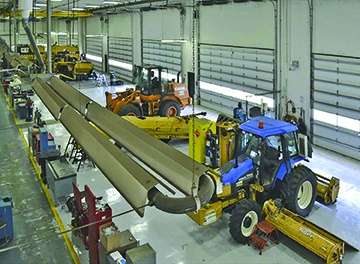
Fleet Facility: Roslyn Campus is one of two sites where Fleet Management maintains and provides fuel for more than 2,500 city vehicles and other pieces of equipment.
Fleet Management’s biggest issue, however, is the size of the city’s fleet and how it is being used. Fleet Management’s goal is a 95% use rate, but the audit found 22% of the city’s fleet was driven fewer than 100 miles in a month.
When it comes to replacing aging vehicles, the city’s goal is to replace 10% of vehicles annually. That goal isn’t being met the audit reveals: 36% of the city’s vehicles are beyond their useful lives of 10 years. Furthermore, 6% of city vehicles are over 20 years old.
One problem is the size of the city’s fleet is still at pre-pandemic levels. The city’s needs have changed since then. A third-party report, commissioned by Fleet Management, estimated the cost to the city for maintaining, repairing, and housing underused vehicles was about $5.7 million in 2022-2023 combined.
Hamstrung By City
Auditor O’Brien suggests that Fleet Management is hamstrung in rightsizing the fleet it is charged with managing because it does not have the authority to sell or dispose of vehicles. Other city agencies make those decisions. “Fleet Management can only advise those agencies,” he asserts.
City agencies rely on Fleet Management to service vehicles and ensure they are available for operations. But because of a decision in 2015 to change the fleet’s funding structure to use the city’s General Fund — instead of using an internal service fund —city agencies do not directly experience the financial impact of maintaining the vehicles.
The previous funding structure allowed Transportation & Infrastructure to bill agencies for the services they use. But since 2015, Transportation & Infrastructure pays for those agencies’ fuel and maintenance costs, so those agencies have no incentive to monitor their spending habits.
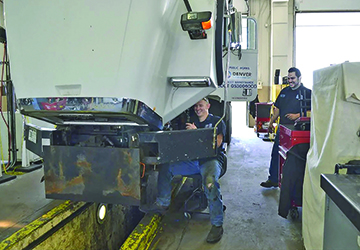
Fix Fee Free: City agencies rely on Fleet Management to service vehicles without directly experiencing the financial impact for maintaining those vehicles.
Funding Flaw
Funding fleets through the General Fund is not a leading industry standard. When auditors looked at how other cities and counties manage their fleets, they found that of 17 similar-sized municipalities, 14 use an internal service fund. Denver ordinance still requires the fleet to be funded by an internal service fund and was never updated after the switch to using the General Fund.
“The funding change was made nearly a decade ago but there’s very little paper trail to explain why this happened,” Auditor O’Brien says. “Departments can’t just pick and choose which ordinances to follow — they’re not optional.
But Fleet Management is really being asked to do the impossible, maintain the city’s fleet without having any authority over it. “This audit will give them the tools they need to pursue solutions to getting that proper authority,” O’Brien hopefully suggests. Transportation & Infrastructure Department officials agreed with all 13 of the audit’s recommendations.

